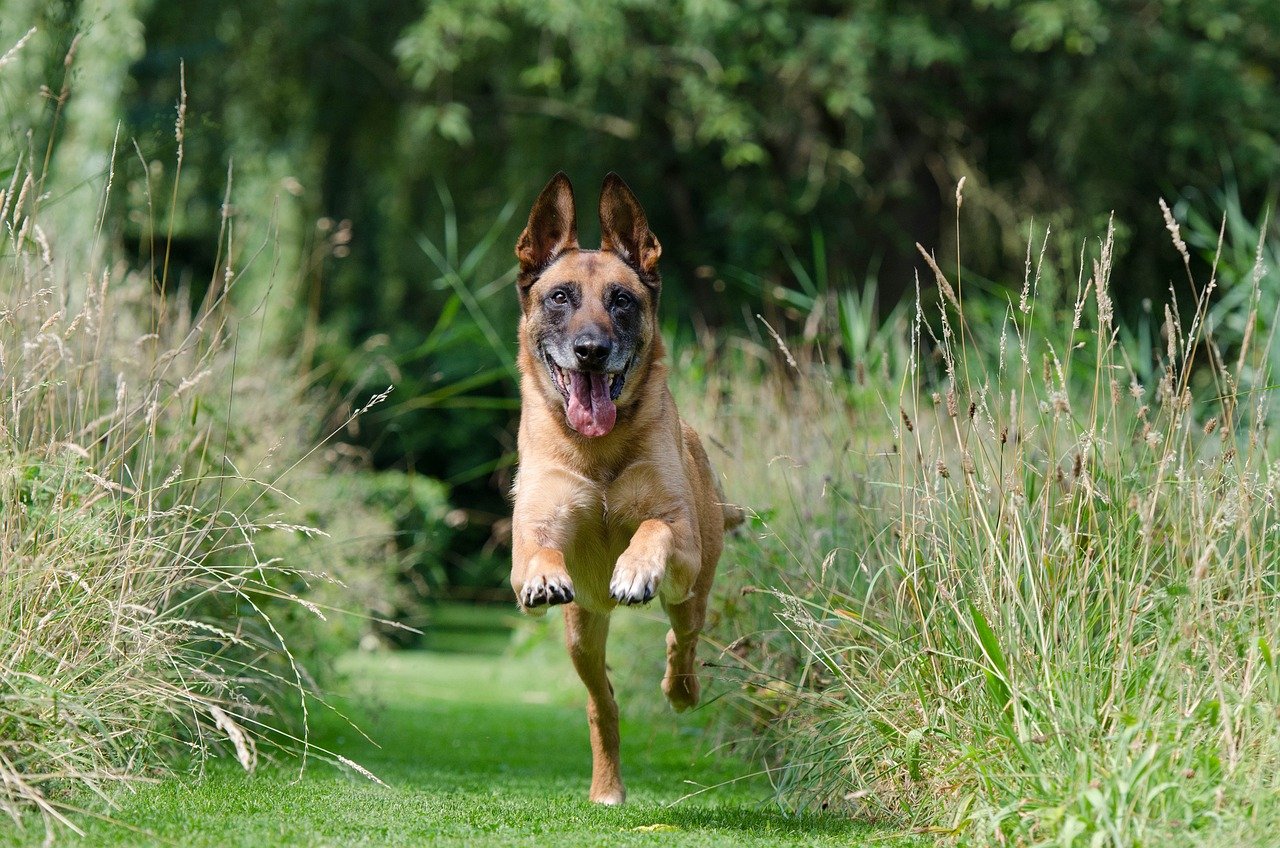So, you’ve noticed that your furry friend seems a bit on edge whenever certain triggers come into play. Whether it’s thunderstorms, strangers, or even the dreaded vacuum cleaner, it breaks your heart to see your dog experiencing anxiety. But don’t worry, because there are steps you can take to help them overcome these fears and live a happier, more relaxed life. In this article, we’ll explore some practical tips and techniques to desensitize your dog to those anxiety-inducing triggers. With a little patience and understanding, you’ll be well on your way to creating a more peaceful environment for your beloved canine companion.
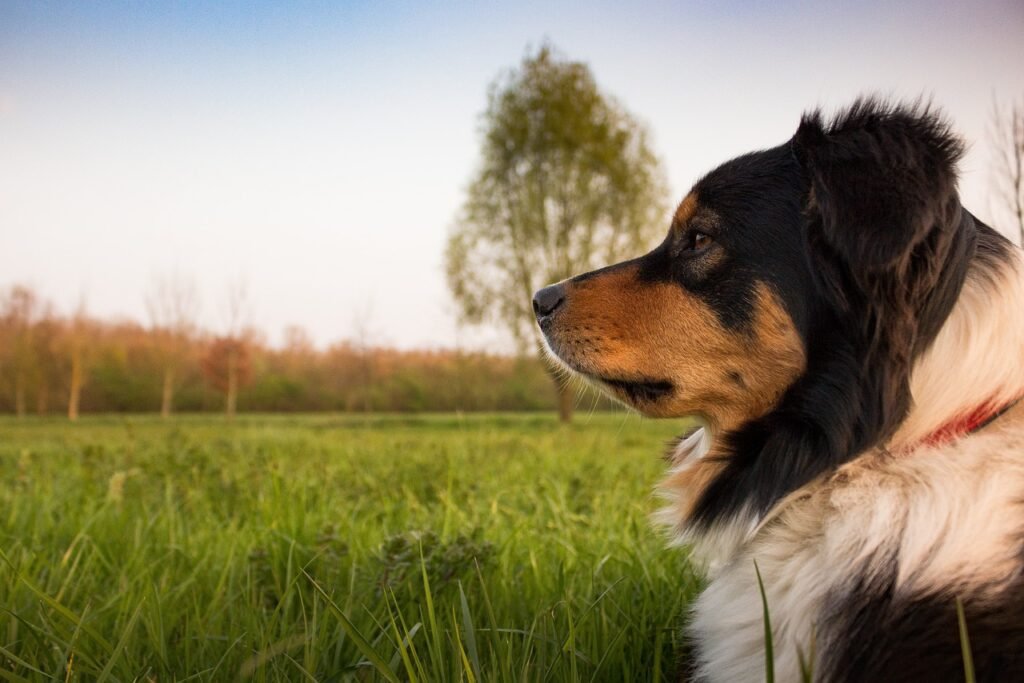
This image is property of pixabay.com.
Understanding Anxiety Triggers
Anxiety triggers are specific situations, objects, or events that can cause anxiety in dogs. By identifying these triggers, you can better understand your dog’s anxiety and develop strategies to help them cope. Common anxiety triggers can include loud noises such as thunderstorms or fireworks, being left alone, meeting new people or animals, and changes in the environment.
Identifying Common Anxiety Triggers
To identify your dog’s anxiety triggers, it is important to observe their behavior during different situations. Pay attention to any changes in their body language, such as trembling, excessive panting, pacing, or hiding. Take note of the specific triggers that seem to consistently cause anxiety in your dog. This could be certain sounds, objects, or even specific people or animals.
Learning About Your Dog’s Specific Triggers
Every dog is unique, and what triggers anxiety in one dog may not affect another. Spend time observing your dog’s reactions to different triggers and take note of any patterns or consistent triggers that cause anxiety. This will help you tailor your desensitization plan to address their specific needs.
Recognizing Signs of Anxiety in Your Dog
Dogs exhibit various signs of anxiety, and it’s essential to recognize these signs to effectively help them. Common signs of anxiety include excessive licking or biting of paws, panting, pacing, trembling, whining, barking, loss of appetite, restlessness, and increased vigilance. By being familiar with these signs, you can determine when your dog is experiencing anxiety and take appropriate action.
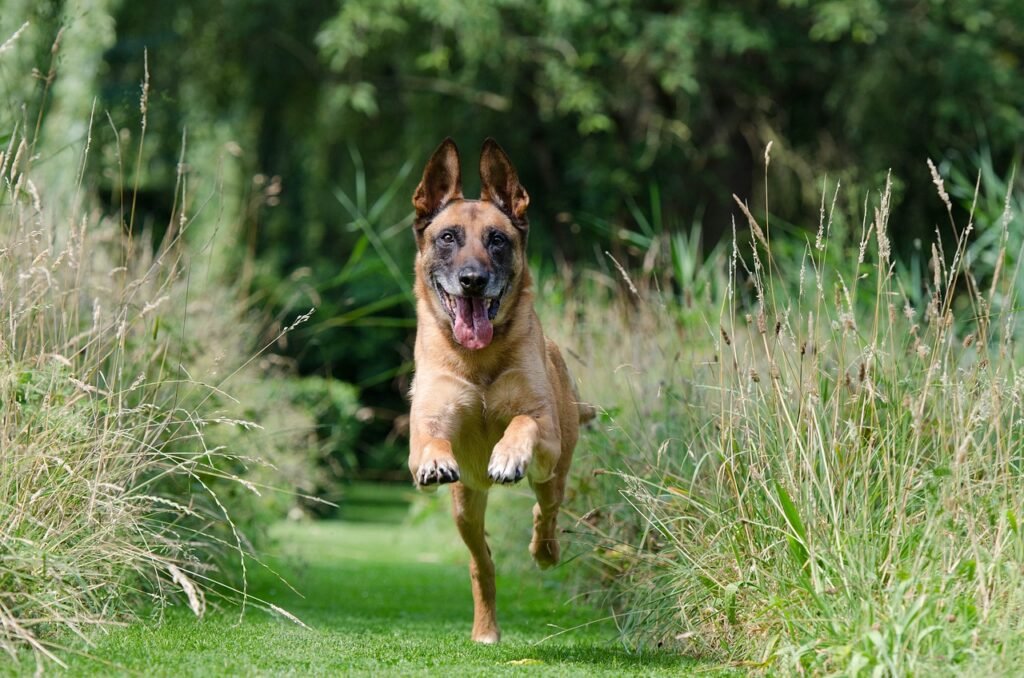
This image is property of pixabay.com.
Creating a Safe and Calm Environment
Creating a safe and calm environment for your dog is crucial in helping them manage their anxiety triggers. Here are some strategies to consider:
Minimizing Exposure to Triggers
Where possible, minimize exposure to triggers that cause anxiety for your dog. For example, if your dog is fearful of thunderstorms, create a safe space for them indoors, away from windows or doors and use soundproofing methods such as playing calming music or using noise-canceling devices.
Establishing a Designated Safe Space
Designate a safe space in your home where your dog can retreat to when they are feeling anxious. This could be a specific room, a crate, or even a cozy corner with their favorite blanket. Make sure this space is comfortable, quiet, and free from any potential triggers.
Using Calming Aids or Pheromone Diffusers
Consider using calming aids or pheromone diffusers to help create a soothing environment for your dog. These can include anxiety wraps, which provide gentle pressure to help reduce anxiety, or pheromone diffusers that release calming scents to help relax dogs. Consult with your veterinarian to determine which options might be best for your dog.
Introduction to Desensitization
Desensitization is a behavior modification technique that aims to gradually reduce your dog’s anxiety response to specific triggers. By exposing your dog to their triggers in a controlled and gradual manner, you can help them develop a more positive and relaxed association with those triggers.
Defining Desensitization as a Behavior Modification Technique
Desensitization involves exposing your dog to their anxiety triggers in a controlled and systematic way, starting with a low level of exposure and gradually increasing it over time. The goal is to help your dog become desensitized to the trigger and reduce their anxiety response.
Exploring the Principles of Systematic Desensitization
Systematic desensitization involves breaking down your dog’s triggers into manageable steps and gradually exposing them to each step while ensuring they remain calm and relaxed. This technique helps your dog build a positive association with the triggers and learn that they are not threatening or fear-inducing.
Understanding Counterconditioning
Counterconditioning is another technique used in desensitization that involves pairing a trigger with something positive to create a new, positive association. For example, if your dog is anxious around strangers, you can pair the presence of strangers with treats, praise, or play to help them associate strangers with positive experiences.
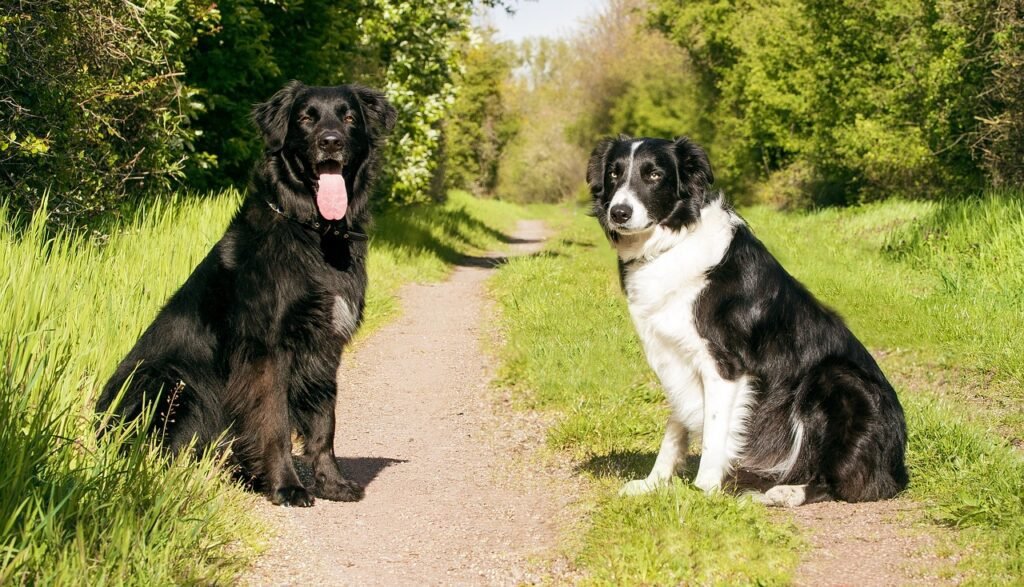
This image is property of pixabay.com.
Creating a Desensitization Plan
Developing a desensitization plan involves setting achievable goals, breaking down triggers into manageable stages, and creating a gradual exposure plan for your dog.
Setting Achievable Goals
Start by setting realistic and achievable goals for your dog’s desensitization process. This could be as simple as having your dog remain calm when exposed to a specific trigger at a certain distance. As your dog progresses, you can adjust and expand these goals accordingly.
Breaking Down Triggers into Manageable Stages
Break down your dog’s triggers into manageable stages, starting with the least triggering aspects and gradually progressing to more challenging ones. For example, if your dog is anxious around other dogs, start by exposing them to a distant view of other dogs and gradually move closer over time.
Developing a Gradual Exposure Plan
Develop a gradual exposure plan that takes into account your dog’s comfort level and gradually increases the intensity or duration of exposure to triggers. It is crucial to move at a pace that allows your dog to remain relaxed and comfortable throughout the process.
Positive Reinforcement and Rewards
Positive reinforcement and rewards play a vital role in desensitizing your dog to triggers that cause anxiety. By using treats, praise, and other rewards, you can help reinforce calm behavior and create a positive association with the trigger.
Using Treats and Praise as Rewards for Calm Behavior
Reward your dog with treats and praise when they display calm behavior in the presence of their triggers. This positive reinforcement helps your dog associate the trigger with something positive, reducing their anxiety response over time.
Implementing Clicker Training
Clicker training is a technique that utilizes a distinct sound, such as a clicker, to mark and reinforce desired behavior. By pairing the click with treats and praise, you can help your dog understand which behaviors are desired during the desensitization process.
Encouraging Voluntary Engagement with Triggers
Encourage your dog to voluntarily engage with their triggers by offering treats or play in proximity to the trigger. This helps them build confidence and develop a positive association with the trigger, further reducing their anxiety response.
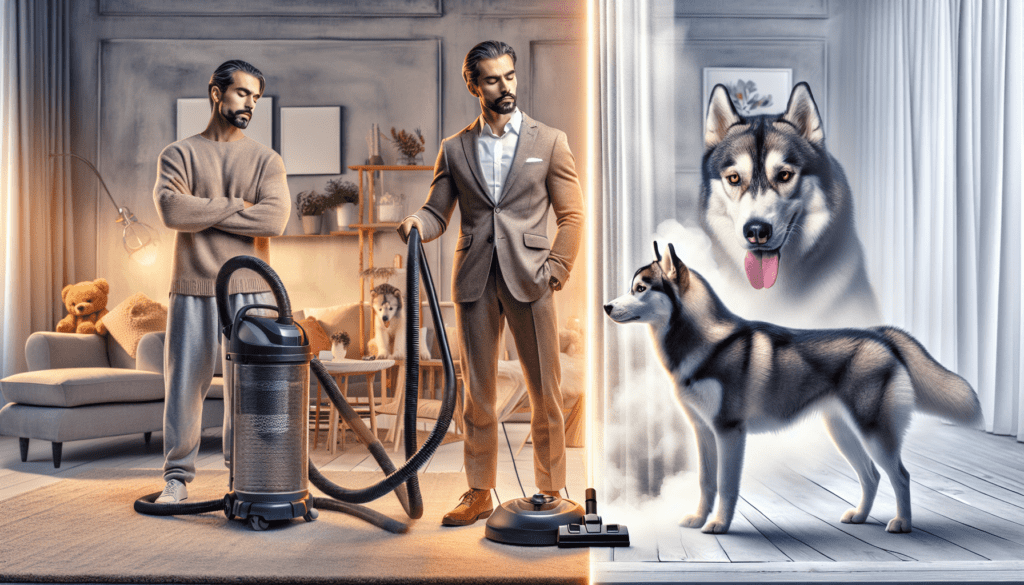
Gradual Exposure to Triggers
Gradual exposure is a crucial step in desensitization, and it involves introducing your dog to their triggers at a comfortable distance while monitoring and adjusting the intensity of exposure.
Introducing Triggers at a Comfortable Distance
Start by introducing your dog to their trigger at a distance where they are comfortable and not displaying signs of anxiety. This could be seeing other dogs from a distance or hearing a recorded thunderstorm at a low volume.
Monitoring and Adjusting the Intensity of Exposure
Observe your dog’s reactions during exposure and adjust the intensity or duration as needed. If your dog becomes anxious or displays signs of stress, take a step back and reduce the exposure until they are more comfortable.
Incrementally Reducing the Distance or Intensity of Triggers
As your dog becomes more comfortable and relaxed, gradually reduce the distance or intensity of their triggers. This can be done in small increments, ensuring your dog remains calm and relaxed throughout the process.
Consistency and Patience
Consistency and patience are key when desensitizing your dog to anxiety triggers. It is important to maintain a consistent desensitization routine and be patient with your dog’s progress.
Maintaining a Consistent Desensitization Routine
Stick to a consistent routine when desensitizing your dog, ensuring regular sessions and progression. Consistency helps your dog understand what is expected of them and builds confidence in their ability to cope with their triggers.
Being Patient with Your Dog’s Progress
Desensitization is a gradual process, and each dog progresses at their own pace. Be patient and understanding with your dog’s progress, celebrating small achievements along the way. Rushing the process can impede progress and increase your dog’s anxiety.
Avoiding Setbacks and Overexposure
To avoid setbacks, it is essential to gauge your dog’s comfort level and avoid overexposure. Pushing your dog too quickly or exposing them to overwhelming situations can exacerbate their anxiety. Always prioritize your dog’s well-being and adjust the desensitization plan accordingly.
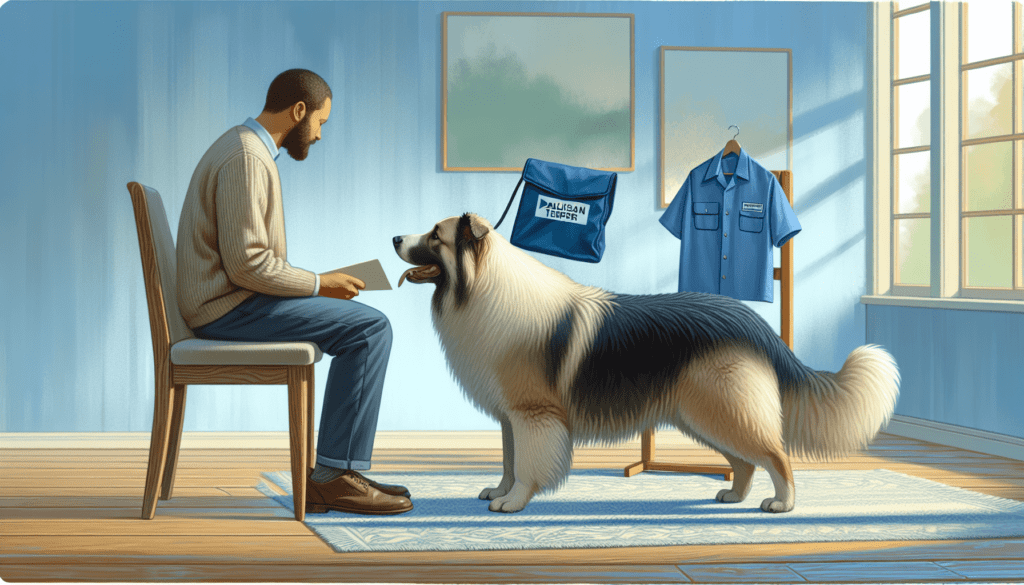
Professional Help and Support
If you’re facing challenges or need additional guidance, don’t hesitate to seek professional help and support. Consulting with a professional dog trainer or behaviorist can provide valuable insights and personalized strategies for desensitizing your dog.
Consulting with a Professional Dog Trainer or Behaviorist
A professional dog trainer or behaviorist can assess your dog’s anxiety triggers and develop a tailored desensitization plan. They can also provide guidance on techniques, demonstrations, and troubleshooting any issues that may arise during the process.
Exploring Alternative Therapies Like Anxiety Wraps or Supplements
In addition to professional help, there are alternative therapies available that may aid in your dog’s desensitization journey. Anxiety wraps, such as Thundershirt, provide gentle pressure that can help soothe anxious dogs. Certain supplements, like CBD or natural calming remedies, may also be worth exploring under the guidance of your veterinarian.
Joining Support Groups or Online Communities
Joining support groups or online communities dedicated to dog training and behavior can provide you with a network of individuals who have faced similar challenges. These communities can offer support, share experiences, and provide additional resources or tips for desensitization.
Avoiding Reinforcement of Fear
When dealing with your anxious dog, it is crucial to avoid reinforcing fear or anxious behavior through punishment or scolding. Negative reinforcement can intensify anxiety and create a negative association with the triggers.
Avoiding Punishment or Scolding During Anxious Episodes
Resist the urge to punish or scold your dog when they are displaying anxiety. This can create additional stress and worsen their anxiety response. Instead, focus on providing comfort and reassurance, redirecting their attention to positive activities or rewards.
Preventing Inadvertent Reinforcement of Anxious Behavior
Be mindful of inadvertently reinforcing anxious behavior in your dog. For example, if your dog seeks attention or reassurance when anxious, ensure that you’re not inadvertently rewarding their anxiety by providing excessive attention or cuddling. Instead, reinforce calm behavior and offer rewards for staying relaxed in triggering situations.
Fostering a Secure and Trusting Bond with Your Dog
Building a secure and trusting bond with your dog is crucial in helping them overcome anxiety triggers. Establish routines, provide consistent training and reassurance, and create positive experiences that help boost their confidence. A strong bond can be a powerful tool in their desensitization journey.
Monitoring Progress and Seeking Veterinary Advice
As you progress with desensitization, it’s important to monitor your dog’s progress and seek veterinary advice if necessary. Your veterinarian can provide additional guidance, recommend adjustments to the desensitization plan, and explore the potential need for medication as a last resort.
Tracking Improvement and Setbacks
Continuously monitor and track your dog’s progress during the desensitization process. Keep a journal or record of their reactions, noting any improvements or setbacks. This will help you identify patterns and make informed decisions about adjustments to your desensitization plan.
Consulting with a Veterinarian if Necessary
If your dog’s anxiety persists or worsens despite your desensitization efforts, it may be beneficial to consult with a veterinarian. They can evaluate your dog’s overall health, discuss potential underlying causes for anxiety, and provide guidance on medication options if necessary. Medication should only be considered as a last resort and under the supervision of a qualified veterinarian.
Considering Medication as a Last Resort
Medication should be seen as a last resort when other strategies and techniques have been unsuccessful in managing your dog’s anxiety triggers. If your veterinarian determines that medication is necessary, they will prescribe the appropriate medication and guide you on its administration and potential side effects.
By understanding anxiety triggers, creating a safe and calm environment, implementing desensitization techniques, and seeking professional help if needed, you can effectively support your dog in overcoming their anxiety and improving their overall well-being. Remember, each dog is unique, so patience, consistency, and a tailored approach are key to success.

